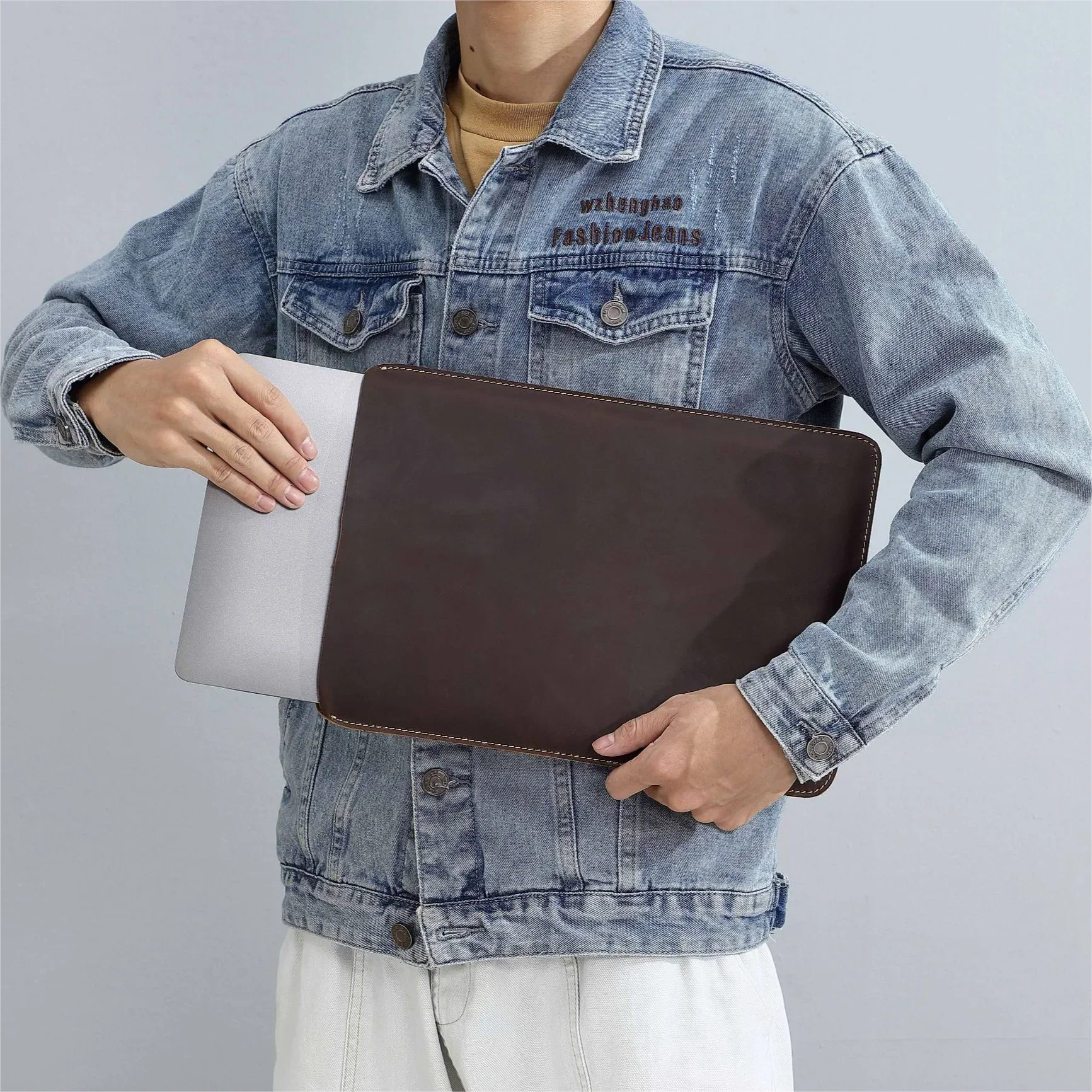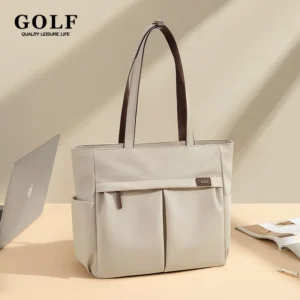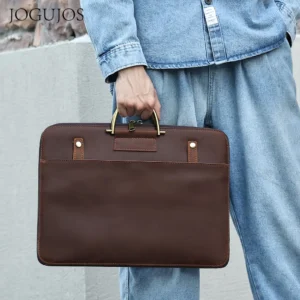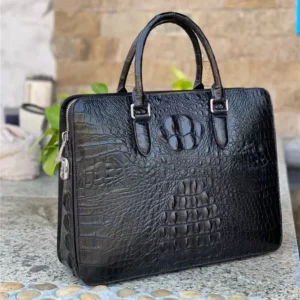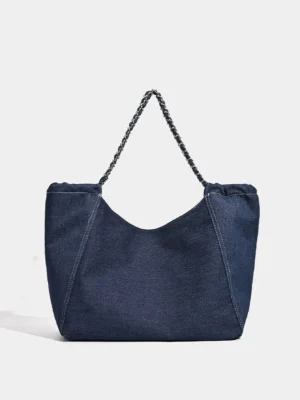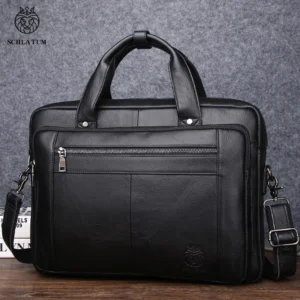I. Introduction: Why Protecting Your Leather Bag from Rain Matters
Rain can be your leather bag’s worst enemy. When water penetrates leather, it strips away natural oils that keep the material supple and flexible. Without these oils, your once-luxurious bag becomes dry, stiff, and prone to cracking—essentially aging it well before its time.
Beyond the structural damage, water exposure creates unsightly aesthetic problems. Water spots, discoloration, and warping can transform your sophisticated accessory into an eyesore. In severe cases, moisture trapped within leather can even lead to mold growth, creating both visible damage and unpleasant odors.
Protecting your leather bag isn’t just about maintenance—it’s an investment in longevity. A quality leather bag that’s properly cared for can last decades and maintain its elegant appearance throughout its life. Neglected leather, however, might deteriorate within just a few years or even months of regular exposure to the elements.
This comprehensive guide offers solutions for every aspect of leather protection—from preventative waterproofing techniques and emergency rain response to long-term maintenance strategies. Whether you’re protecting a treasured timeless classic leather briefcase or a newer acquisition, these methods will help ensure your leather goods remain beautiful despite unpredictable weather.
II. Understanding How Different Leathers React to Water
Leather’s natural properties make it inherently vulnerable to water damage. As a natural material derived from animal hide, leather contains fibers and pores that can absorb moisture. Without proper protection, water can penetrate these pores, causing swelling, misshaping, and deterioration of the material’s structure.
Different leather types respond uniquely to water exposure:
Full-grain and top-grain leather: The most durable leather varieties found in best leather briefcases have a natural water resistance that’s moderate at best. When wet, these leathers can develop dark spots that might fade as they dry, but repeated exposure leads to stiffening and cracking. Full-grain leather’s tight fiber structure provides slightly better natural resistance than other types.
Suede and nubuck: These velvety leathers are highly absorbent and extremely vulnerable to water damage. Even light rain can cause permanent watermarks, stiffness, and color changes. The raised fibers that create their soft texture become matted and discolored when wet.
Patent leather: While its glossy surface coating provides good immediate protection, water can seep through seams and damage the underlying material. The plastic coating can also crack over time with repeated moisture exposure.
Vegan/faux leather: Synthetic alternatives vary widely in water resistance. Some withstand moisture better than genuine leather, while lower-quality versions may crack or peel when repeatedly exposed to water.
Understanding your full-grain messenger bag or other leather item’s specific material composition is crucial to implementing the right protection strategy. The appropriate waterproofing method for smooth leather might damage suede, while patent leather requires different care entirely.
III. Pre-Rain Protection: Waterproofing Your Leather Bag
A. Selecting the Right Protective Products
The foundation of effective leather protection begins with choosing the right waterproofing products suited for your specific leather type. Different formulations offer varying levels of protection, application methods, and effects on leather appearance.
Waterproofing options include:
Waterproofing sprays: Ideal for most leather types, especially smooth leathers found in classic leather briefcases. These create an invisible barrier that repels water without changing leather’s appearance or breathability. Best for regular maintenance and easy application. However, they typically require more frequent reapplication than waxes.
Waxes and balms: Provide robust, longer-lasting protection by creating a physical barrier against moisture. These work exceptionally well for full-grain and top-grain leathers. While they offer superior waterproofing, waxes can darken leather slightly and may require more effort to apply evenly.
Conditioning creams with water-resistant properties: These hybrid products nourish leather while adding moderate water protection. They’re excellent for regular maintenance between more intensive waterproofing treatments, keeping leather supple while providing basic water resistance.
When selecting products, look for those specifically formulated for your leather type. Quality indicators include natural ingredients like beeswax, lanolin, or silicone-based compounds for water repellency. Avoid products containing alcohol or petroleum distillates, which can dry out leather over time.
For suede and nubuck, only use specially formulated sprays—standard leather protectors can ruin their texture. Patent leather benefits most from specialized patent cleaners rather than traditional waterproofers.
B. Application Techniques for Maximum Protection
Proper application technique ensures optimal protection without damaging your leather bag. Follow these steps for best results:
Clean thoroughly first: Remove all dirt, dust, and residue with a leather-appropriate cleaner. Any particles trapped under waterproofing products can cause uneven protection and potentially damage the leather.
Conduct a patch test: Apply a small amount of product to an inconspicuous area and wait 24 hours to check for adverse reactions like discoloration or texture changes.
Apply according to product type:
– For sprays: Hold 6-8 inches away from the surface and apply in light, even coats. Multiple thin layers provide better protection than one heavy application.
– For waxes and balms: Use a clean cloth to apply in small circular motions, working the product into the leather. Pay special attention to seams and hardware attachment points where water commonly enters.Allow proper drying time: Let the product dry completely according to manufacturer instructions—typically 24-48 hours in a well-ventilated area away from direct heat and sunlight.
Apply secondary treatments if needed: Some leathers benefit from a second application, particularly high-wear areas like handles and bottom corners.
Establish a reapplication schedule: Most waterproofing treatments should be reapplied every 3-6 months, depending on bag usage and weather exposure.
Common mistakes to avoid include over-saturating the leather, applying products to wet leather, and using direct heat to speed drying, which can cause leather to crack or warp.
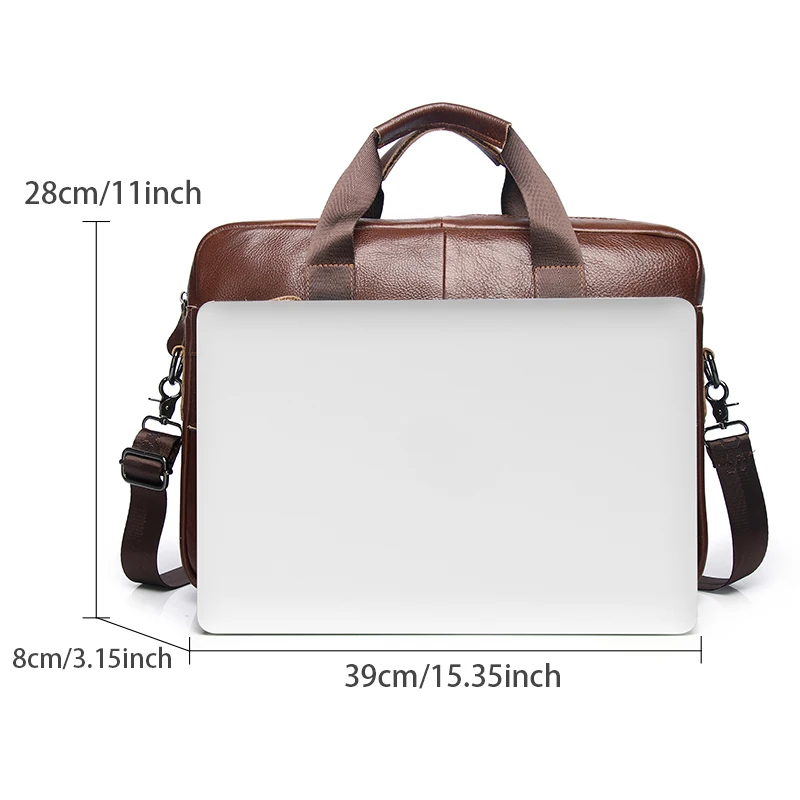
C. Everyday Preventative Habits
Beyond formal waterproofing treatments, these simple daily habits significantly extend your leather bag’s protection against unexpected rain:
Use protective covers: Carry a foldable rain cover or dust bag that can be quickly deployed when rain threatens. Microfiber or nylon covers take up minimal space but provide crucial protection.
Check weather forecasts: Make a habit of reviewing the day’s weather before selecting which bag to carry. Consider alternating between leather and weather-resistant materials during rainy seasons.
Implement proper storage: When not in use, store your leather bag properly to prevent moisture damage. Follow definitive guidelines for storing leather bags including using dust bags, maintaining shape with stuffing, and selecting dry storage locations.
Practice mindful placement: Avoid setting your bag on wet surfaces like restaurant floors or public transit areas where rainwater collects. Use hooks or chair hangers when available.
Minimize high-risk exposure: In heavy downpours, carry your bag under an umbrella or shield it with your coat. When entering vehicles, place bags inside before exposing yourself to rain.
These simple preventative measures require minimal effort but provide significant protection against unexpected moisture exposure.
IV. Emergency Response: Saving Your Leather Bag After Rain Exposure
A. Essential Recovery Supplies
Being prepared with the right materials can make the difference between successfully saving your rain-soaked leather bag and permanent damage. Keep these essential items on hand for leather emergencies:
Absorbent cloths: Microfiber cloths are ideal as they absorb water efficiently without scratching leather surfaces. Avoid paper towels, which can leave residue or fibers on the leather.
Stuffing materials: Clean, plain white paper (not newspaper, which can transfer ink), bubble wrap, or acid-free tissue paper to help maintain your bag’s shape during drying.
Leather-safe cleaning products: Gentle, pH-balanced leather cleaners to remove any dirt or residue that may have mixed with rainwater.
Leather conditioner: To restore moisture and oils after drying, preventing the leather from becoming brittle from water exposure.
Having these supplies ready means you can act quickly when water exposure occurs—a critical factor in preventing lasting damage.
B. Step-by-Step Rescue Process
Time is of the essence when your leather bag gets caught in the rain. Follow these steps immediately to minimize damage:
Act quickly: Begin the rescue process as soon as possible. The longer water sits in leather, the greater the potential for permanent damage.
Empty the bag completely: Remove all contents, paying special attention to papers, electronics, and items that might leak or bleed color when wet.
Blot excess water gently: Use absorbent cloths to blot—never rub—the surface. Rubbing can push water deeper into the leather or damage the grain. Work from lightly damp areas toward wetter sections.
Preserve the bag’s shape: Stuff the bag gently with white paper or bubble wrap to maintain its structure while drying. Pay special attention to corners and structured areas.
Air dry properly: Place the bag in a well-ventilated room at normal temperature. Never use hair dryers, heaters, or direct sunlight, as heat can cause leather to crack, warp, or shrink. Complete drying may take 24-48 hours.
Address water spots: Once completely dry, assess for water spots and address them using appropriate techniques (covered in the next section).
Condition after drying: When thoroughly dry, apply a leather conditioner to restore natural oils. The conditioning step is crucial as water strips essential oils from leather.
If the leather shows signs of severe damage—such as pronounced warping, color loss, or mold growth—professional leather restoration may be necessary rather than DIY methods.
INTERNAL_LINK: For detailed guidance on addressing more challenging issues, see our guide on cleaning stains from leather bags.
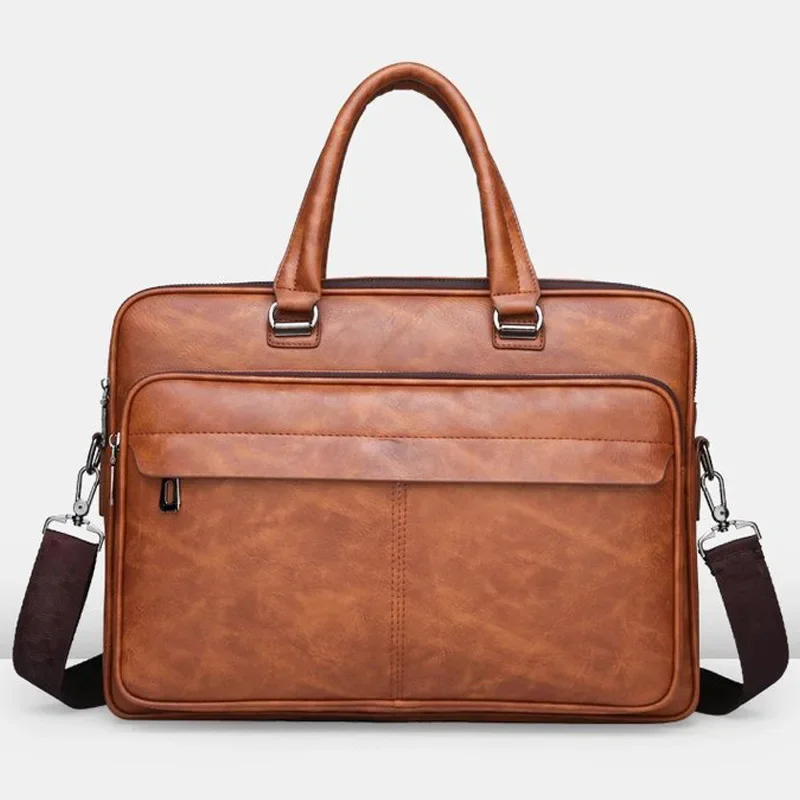
C. Addressing Water Stains and Spots
Even after proper drying, water can leave various types of marks on leather that require specific treatment approaches:
Light water spots on smooth leather: These appear as darkened areas with subtle outlines. For minor spots, gently wiping with a slightly damp cloth followed by immediate drying can help blend the edges. For more stubborn spots, a mixture of equal parts white vinegar and water applied lightly can help even out discoloration.
Dark watermarks and ring stains: These stubborn rings require more intensive care. A small amount of leather conditioner worked gently into the entire panel (not just the stained area) can help blend the marks. Work from the outside of the stain inward with circular motions.
Whitish salt deposits: These often appear after rainwater dries, especially in winter when roads are treated with salt. Remove these using a cloth dampened with a solution of equal parts water and white vinegar, followed by thorough conditioning.
Color changes or bleeding: When leather dyes bleed or shift, professional intervention is often necessary. Home remedies typically cannot restore even coloration in these cases.
For leather laptop work totes and other bags with multiple leather types or hardware, address each material appropriately—what works for smooth leather may damage suede accents.
V. Essential Do’s and Don’ts for Leather Rain Protection
DO:
– Apply waterproofing treatments regularly, ideally every 3-6 months or before rainy seasons
– Blot excess water immediately if your bag gets wet, using gentle pressure
– Allow wet leather to dry naturally at room temperature
– Condition leather after it has completely dried from water exposure
– Test new products on a hidden area before full application
– Store leather bags in breathable dust bags, not plastic, to prevent moisture buildup
DON’T:
– Use direct heat sources (hair dryers, radiators, etc.) to speed up drying
– Leave wet leather bags in humid or enclosed spaces, which can promote mold growth
– Apply waterproofing products to dirty or damp leather
– Use products not specifically formulated for your leather type
– Over-saturate leather with waterproofing treatments
– Ignore early signs of water damage, which worsen over time
These principles apply to all leather goods but are particularly important for durable leather bags for daily use that face regular exposure to changing weather conditions.
VI. Long-Term Care Strategies for Water-Resistant Leather Bags
Maintaining your bag’s water resistance requires ongoing attention through these comprehensive care practices:
Regular cleaning routine: Dust and dirt can compromise waterproofing treatments and damage leather over time. Clean smooth leather bags with a soft cloth weekly and do a deeper cleaning with appropriate leather cleaner monthly. For suede, use a specialized brush to remove surface dirt without damaging the nap.
Conditioning schedule: Apply leather conditioner every 1-3 months depending on usage and climate. More frequent conditioning is necessary in dry climates, while humid environments may require less. Conditioning maintains leather’s natural moisture balance, enhancing its inherent water resistance.
Proper storage: Store bags in breathable cotton dust bags away from direct sunlight and heat sources. Maintain shape with light stuffing, and never store leather in plastic bags, which trap moisture. For long-term storage, apply a light conditioning treatment before putting bags away.
Seasonal care adjustments: Increase waterproofing frequency during rainy seasons and conditioning during dry periods. In winter, be particularly vigilant about salt exposure from roads and sidewalks.
Re-treatment indicators: Watch for signs that waterproofing is fading, such as water no longer beading on the surface or leather darkening slightly when exposed to light moisture. These indicate it’s time to reapply protective treatments.
Even vegan leather briefcases benefit from appropriate waterproofing treatments, though the specific products differ from those used on animal leather. Follow manufacturer recommendations for synthetic materials.
VII. Top Products for Leather Bag Water Protection
Different leather types and finishes require specific protective products for optimal results. Here’s a selection of effective options by category:
Waterproofing sprays:
– For smooth leather: Look for silicone-based sprays that create invisible barriers without changing leather’s appearance or feel
– For suede and nubuck: Choose specially formulated sprays that maintain the material’s texture while adding water repellency
– For all leather types: Consider fluoropolymer-based protectors that offer excellent water resistance without affecting breathability
Leather waxes and balms:
– For work bags and briefcases: Beeswax-based formulations provide robust protection ideal for items frequently exposed to outdoor conditions
– For lighter-colored leathers: Colorless, non-darkening waxes that protect without altering appearance
– For vintage leather: Traditional mink oil and lanolin formulations that condition while waterproofing
Conditioning products with water resistance:
– For regular maintenance: Creams containing natural oils plus minimal wax for light protection during daily use
– For color enhancement: Tinted conditioners that restore color while adding water protection
– For aged leather: Intensive conditioning treatments that restore oils while improving water resistance
The best products for leather bags for city commuting combine effectiveness with convenience, allowing quick application before heading out in unpredictable urban weather.
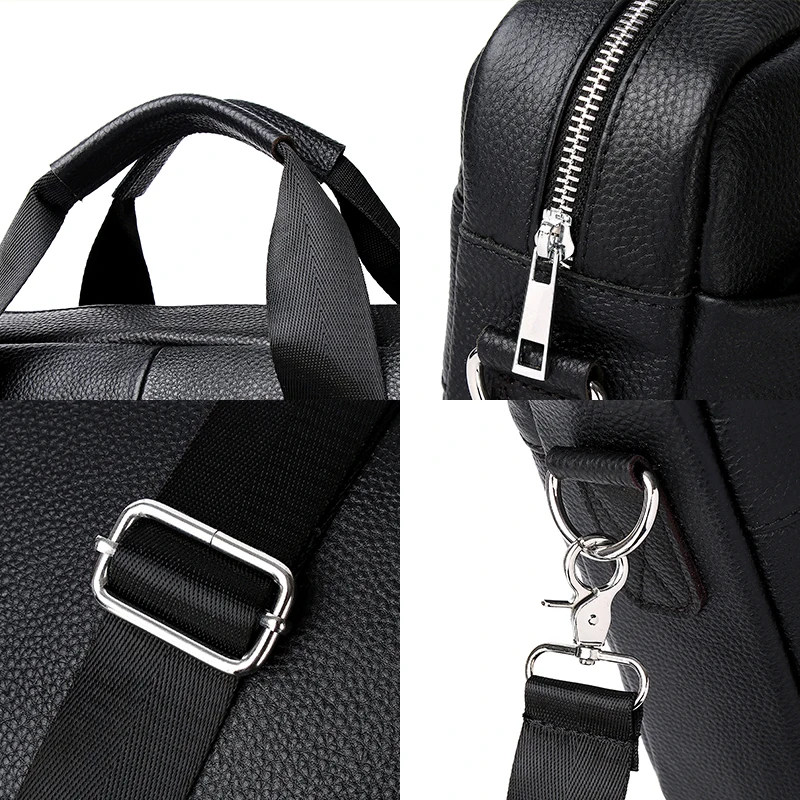
Men's Classic Leather Briefcase, Slim Leather Laptop Briefcase, Slim Leather Portfolio Briefcase
$93.67 Select options This product has multiple variants. The options may be chosen on the product pageLeather Laptop Work Tote, Tan Leather Work Tote, Women's Leather Work Tote, Zippered Leather Work Tote
Price range: $223.62 through $237.97 Select options This product has multiple variants. The options may be chosen on the product pageClassic Laptop Briefcase, Men's Classic Leather Briefcase, Slim Leather Attache Case
Price range: $353.50 through $360.81 Select options This product has multiple variants. The options may be chosen on the product pageBlack Leather Briefcase, Leather Document Bag, Men's Classic Leather Briefcase
Genuine Crocodile Leather Executive Briefcase with Password Lock – Premium Business Document Carrier$1,201.87 Select options This product has multiple variants. The options may be chosen on the product pageCanvas & Leather Messenger Bag, Leather Commuter Tote
$80.41 Select options This product has multiple variants. The options may be chosen on the product pageBlack Leather Briefcase, Classic Laptop Briefcase, Men's Classic Leather Briefcase, Slim Leather Laptop Briefcase
$228.72 Select options This product has multiple variants. The options may be chosen on the product page
VIII. Frequently Asked Questions About Leather and Water
How often should I waterproof my leather bag?
Most leather bags should receive waterproofing treatment every 3-4 months with normal use. Increase frequency to monthly during rainy seasons or if you commute outdoors daily.
Will waterproofing products change my bag’s color or texture?
Quality waterproofing sprays designed for leather should not significantly alter appearance. Waxes and balms may slightly darken leather and enhance its natural patina. Always test products on a hidden area first.
What’s the difference between water-resistant and waterproof leather?
Water-resistant leather can withstand light moisture exposure but will eventually absorb water. Truly waterproof leather (usually heavily treated or coated) repels water completely but may have reduced breathability and a different feel than traditional leather.
Can I use shoe waterproofing products on my leather bag?
Some products work for both, but bag leather is often more delicate and differently finished than shoe leather. Use products specifically formulated for handbags and briefcases when possible.
How can I tell if water damage requires professional repair?
Seek professional help if your bag shows significant stiffness after drying, color loss or bleeding, mold growth, or structural warping that doesn’t resolve with reshaping.
Is it safe to use my treated leather bag in light rain?
A properly waterproofed bag can handle brief exposure to light rain. However, prolonged exposure still risks damage. Keep a small umbrella or rain cover handy for unexpected downpours.
Are there eco-friendly options for leather protection?
Yes, look for products containing natural waxes, plant-based oils, and free from harmful VOCs or fluorocarbons. Beeswax-based protectors and some vegetable-based formulations offer effective protection with reduced environmental impact.
Understanding these principles helps when choosing the perfect leather briefcase that matches your climate and lifestyle needs.
IX. How to Choose the Perfect Water-Resistant Work Bag
When selecting a leather work bag with optimal water resistance, consider these key factors:
Naturally resistant leather types: Full-grain leather offers superior natural water resistance compared to other varieties due to its intact, dense fiber structure. Top-grain leather provides good resistance with a more refined appearance. Treated or “pull-up” leathers contain added waxes and oils that enhance water repellency.
Construction features: Look for reinforced seams with tight stitching that prevent water from seeping inside. Rolled or piped edges offer better protection than raw edges. Interior linings made from water-resistant materials provide an additional barrier against moisture that penetrates the leather.
Protective design elements: Consider bags with protective feet that keep the bottom surface elevated from wet ground. Flap closures provide better rain protection than zip-top designs. Minimal external hardware reduces potential water entry points.
Weather-appropriate styles: In frequently rainy locations, choose structured bags that maintain their shape when wet. Leather commuter totes with dedicated laptop compartments offer additional protection for electronics during wet commutes.
Investing in premium leather goods often provides better inherent water resistance due to higher-quality materials and construction techniques. While the initial cost is higher, superior water resistance means longer-lasting products and fewer weather-related repairs.
X. Rain Protection for Different Professional Scenarios
Different work environments and commuting situations require tailored approaches to leather bag protection:
Daily commuting: For regular public transit users, consider applying heavy-duty waterproofing treatments seasonally and carrying a foldable bag cover. Position your bag on your lap rather than on potentially wet floors, and avoid placing it in overhead compartments where other passengers’ wet umbrellas might drip.
Business travel: When traveling, pack leather protection wipes for quick touch-ups after unexpected weather exposure. Use hotel room cloths to blot moisture immediately if caught in rain between transportation and accommodations. Consider a lightweight rain sleeve that packs easily in your luggage.
Office environment: Keep a small leather conditioning cloth in your desk drawer for quick treatment of water spots from unexpected rain or spills. Designate a dry storage location away from windows where rain might enter or humidity levels fluctuate.
Client meetings: When attending external meetings during inclement weather, arrive early to allow time for drying and touching up your bag before important presentations. Consider weather-appropriate bag rotation during rainy seasons.
Industry-specific considerations vary widely—field-based professionals might prioritize heavily treated, water-resistant leather, while those in traditional office settings might balance water resistance with professional aesthetics. Professional laptop messengers with weather-resistant features offer a practical solution for those regularly transporting technology through changing conditions.
By understanding your specific professional needs and implementing appropriate protective measures, you can maintain your leather bag’s appearance and integrity regardless of weather challenges.

